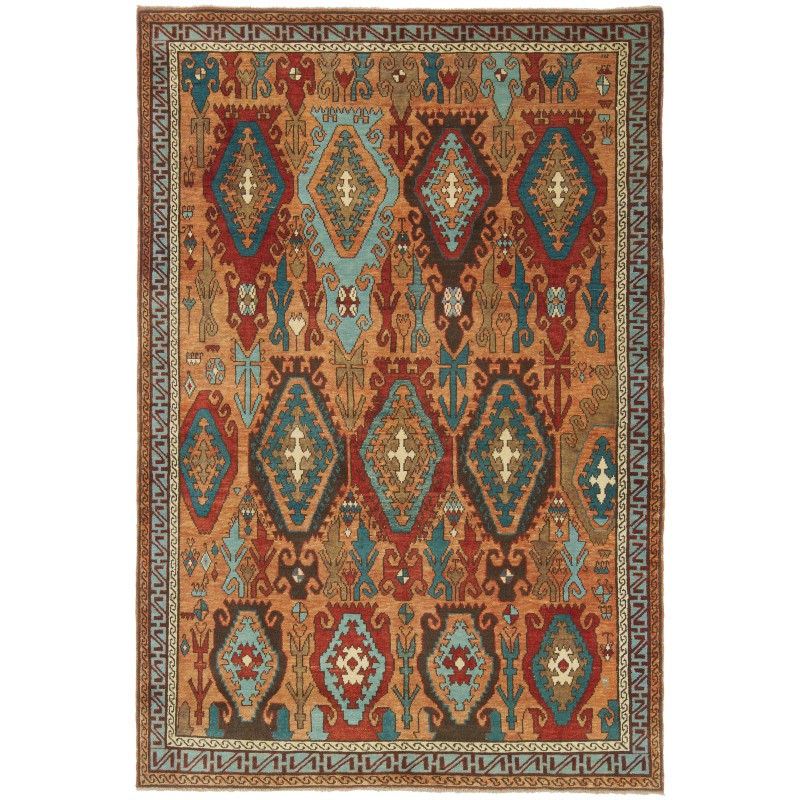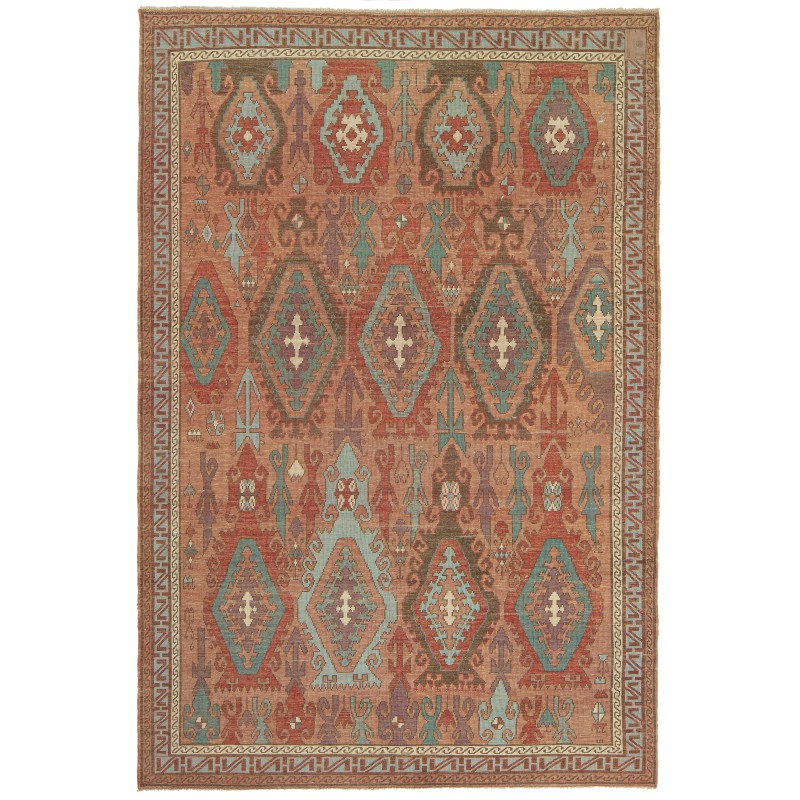



- Stock: In Stock
- Model: C50367
- サイズ: 225cm x 151cm
- SKU: ART367
- Location: ishitaya 22-12
この絨毯の情報は、E. Heinrich Kirchheim著の『オリエントスター - カーペットコレクション』、Hali Publications Ltd、1993年214号から引用されています。この絨毯は17世紀のデザインを持つシャルキシュラ(サルキスラ、シャルキシュラまたはシャルキスラ)地域、トルコのシヴァス、中央アナトリア地域のものです。この絨毯はシャルキシュラグループに属し、東トルコのシヴァスの南に位置する村で、類似のデザインを持つ絨毯が見つかったことにちなんで名付けられました。一般的に、このグループは18世紀から19世紀にかけてのものですが、この絨毯の素晴らしい色合いと魅力は、やや古い時期のものかもしれません。レイアウトと大きなモチーフはこのグループ特有のものです。中間の例は残っていませんが、このタイプは羽状格子デザインのグループと最も関連があるようです。羽状格子デザインの絨毯は、約200年前のより早い時期に作られたものがほとんどです。この絨毯は格子状のモチーフに囲まれたメダリオンと比較すると有用です。
専門家の間では、アナトリアのカーペットやキリムは、古代の価値やアイデアの象徴を記録していると考えられており、これは数千年前からの伝統であり、産業時代に置き換えられたに過ぎませんでした。アナトリアのキリムのデザインの伝統は、パイル織りのカーペットの方がより貴重に見え、数千年前には既に高い名声を持っていたため、幸運な形で生き残ることができました。そのため、キリム織りは長い間、完全な文化的文脈の中で邪魔されることなく存続することができました。この絨毯のデザインは、一連のフレームで解釈され、柔らかい色合いがデザイナーによって選ばれました。
The source of the rug comes from the book Orient Star – A Carpet Collection, E. Heinrich Kirchheim, Hali Publications Ltd, 1993 nr.214. This is a series of medallions designed rug from the 17th century, Şarkışla (Sarkisla, Sharkishla or Sharkisla) region, Sivas, Central Anatolia area, Turkey. This rug belongs to the Şarkışla group, named for the village south of Sivas in eastern Turkey, where a number of rugs with similar designs were found. In general, the group dates from the 18th and 19th centuries; the wonderful color and appeal of this rug indicate that it may be slightly earlier. The layout and large motifs are peculiar to the group. Although no interim examples have survived, this type appears to be most closely related to the feathered lattice design group, most of which are from an earlier period of about two hundred years. It is useful to compare this rug with medallions surrounded by lattice-design rugs, the earliest example of the lattice type. The whole design is a series of single hooked medallions each surrounded by figures and sailer anchors.
Among specialists, Anatolian carpets and kilims are believed to record symbols of ancient values and ideas, a tradition that dates back several millennia and was only displaced during the industrial age. The Anatolian kilim design tradition probably owes its lucky survival to the fact that pile-woven carpets look more precious and would already have had a higher prestige value several millennia ago. Kilim weaving was, therefore, able to survive undisturbed within an intact cultural context for a long period of time. The design of this rug is interpreted with a series of borders and soft colors are chosen by our designers for this rug.
全部で8色使っています。主な4色は以下です。
- Salmon 536 (茜)
- Bistre Brown 411 (ザクロの皮 - 茜)
- Maroon 433 (茜)
- Opal 533 (ヘナ - 藍)
上の番号は私たちのカラーコードです。()の中は、主な草木染めの材料です。
